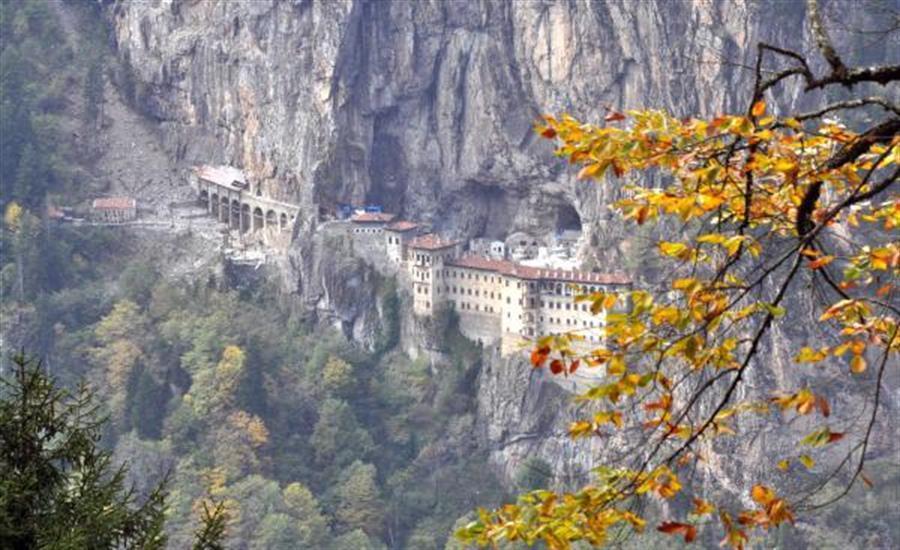
The Sümela Monastery in the Black Sea province of Trabzon was reopened to visitors on July 1 after the completion of more than five years of restoration works.
The restoration of the majestic monastery complex began in February 2016 and was completed in two phases after landscaping, investigation and strengthening of the geological and geotechnical maintenance of rocks, with a cost of around 57 million Turkish Liras ($6.53 million), according to the Provincial Culture and Tourism Directorate.
At a ceremony organized for the reopening of the monastery, Culture and Tourism Minister Mehmet Nuri Ersoy said that the restoration work in the monastery was one of the projects they prioritized.
Stating that the problem that complicated the work was the flow coming from the rocky areas of the mountains, Ersoy said, “It is not an environment where everyone can work. Our mountaineering team, engineers and special experts work under very difficult climatic conditions. It is not possible to work here regularly for 12 months due to the harsh winters.”
Ersoy also noted that strenuous efforts were carried out within the scope of rock cleaning works over an area of 20,000 square meters, where some rocks were fixed and others removed.
Reminding that Sümela Monastery is a very important spot for the Black Sea and Trabzon tourism and they partially opened it in November 2019, Ersoy said: “We opened the first part that can be seen from the entrance. Last year, we opened all the places that were already open to the public before the restoration. What we did at this stage was the cleaning of the remaining rocks and the cleaning of the sections that were closed to visitors before.”
“In the new section, there are many spots such as new chapels, monks’ rooms, halls and guesthouses. We have also created places where we can make presentations in the digital environment. There is a secret chapel, which will open in a week or two,” the minister added.
Ersoy pointed out that there are frescoes of great importance in different parts of the monastery and that coloring and revitalization works were ongoing in these areas.
Stating that a team will constantly work in the monastery to revive the frescoes, Ersoy said, “Unfortunately, due to the structure of this place, both water and condensation damage the frescoes here. Now a team of experts will work here for 12 months. They will investigate the reasons, report and file them. In this way, I think that we will be able to protect this place without the need to close it permanently to tourism again. I hope that it will provide serious benefits to the tourism of the Black Sea, especially Trabzon.”
Also known as Mother Mary or Virgin Mary, the Sümela Monastery is carved out of rocks in a wooded area on the slope of Mount Karadağ in Maçka district, 300 meters above the Altındere Valley.
The monastery included in UNESCO’s Tentative List of World Heritage sites was reopened for religious practice on Aug. 15, 2010, with permission of the Culture and Tourism Ministry, following an 88-year hiatus. The country’s most important religious tourism center was closed in 2015 due to a risk of falling rocks from nearby Mount Karadağ.
It was partly reopened to visitors in May 2019 after more than three years of restoration efforts.
Following the opening ceremony, the Presidential Symphony Orchestra performed a concert on the platform created in the parking lot in the lower part of the monastery.